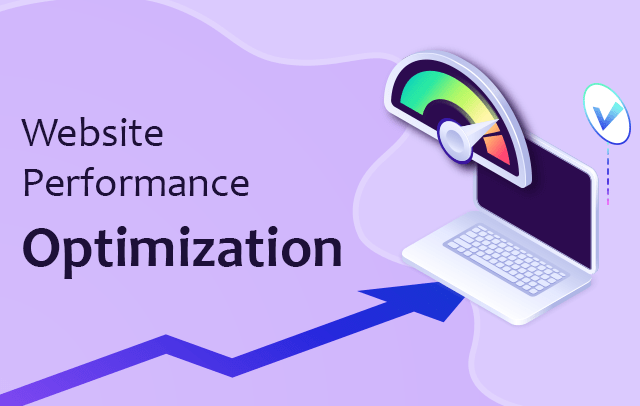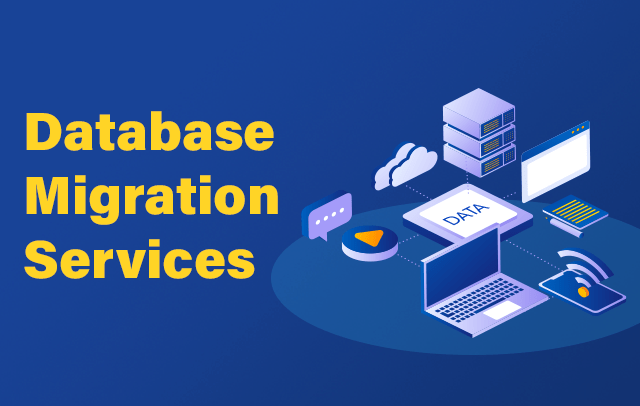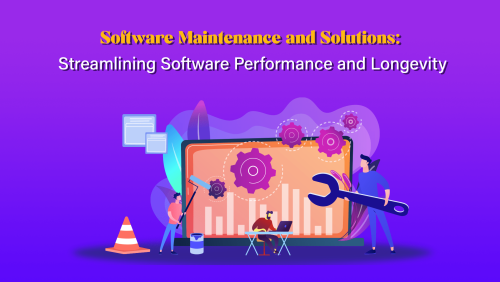
Enhancing Website Performance and Stability with Efficient Database Solutions
Website Performance Optimization
Website performance optimization refers to the process of improving the speed, responsiveness, and overall performance of a website to enhance user experience, increase engagement, and achieve better search engine rankings. In the current digital era, characterized by short attention spans and intense competition, the optimization of website performance is vital to attract and retaining visitors.

The following are key aspects involved in website performance optimization:
Page Load Speed: One of the primary goals of website performance optimization is to minimize page load times. Faster-loading websites provide a better user experience, reduce bounce rates, and improve search engine rankings. Techniques such as minimizing HTTP requests, compressing files, optimizing images, and utilizing caching mechanisms can significantly enhance page load speed.
Responsive Web Design: With the increasing use of mobile devices, ensuring that a website is responsive and mobile-friendly is essential. Responsive web design allows the website to adapt and display optimally across different screen sizes and devices. This optimization technique improves user experience and accessibility, which are crucial factors for user engagement and search engine rankings.
Minimizing Code and File Size: Optimizing website performance involves reducing the size of code files, scripts, and other resources. Minifying JavaScript, CSS, and HTML files remove unnecessary characters, whitespace, and comments, resulting in smaller file sizes and faster downloads. Similarly, optimizing image file sizes without compromising quality through compression techniques can significantly improve website performance.
Content Delivery Network (CDN): Utilizing a content delivery network can improve website performance by distributing website content across multiple servers located in different geographical locations. CDNs help reduce latency and improve response times by delivering content from the server closest to the user's location. This optimization technique ensures faster content delivery and a better user experience for visitors worldwide.
Browser Caching: Browser caching involves storing static website resources (such as images, CSS, and JavaScript files) locally on a user's device. By caching these resources, subsequent page visits can be faster, as the browser doesn't need to re-download them. Proper caching headers and expiration settings can leverage browser caching and significantly improve website performance.
Website Monitoring and Optimization: Continuous monitoring of website performance is crucial to identify bottlenecks, performance issues, and opportunities for optimization. Tools such as Google Analytics, Pingdom, or GTmetrix can provide insights into website performance metrics and help pinpoint areas that require attention. Regular optimization efforts, based on data-driven analysis, ensure that the website maintains optimal performance levels over time.
Website performance optimization is an ongoing process that requires regular evaluation, testing, and optimization to keep up with evolving technologies and user expectations. By focusing on improving page load speed, mobile responsiveness, code efficiency, and overall user experience, organizations can create a fast, engaging, and competitive website that delivers value to users and achieves business objectives.
.png)
Website Security Audits
Website security audits are comprehensive assessments of a website's security measures, protocols, and vulnerabilities to identify potential risks and ensure the protection of sensitive data and user information. These audits are conducted to evaluate the effectiveness of existing security controls, detect vulnerabilities, and recommend necessary actions to enhance website security.
The following are key aspects involved in website security audits:
Vulnerability Assessment: A thorough website security audit begins with a vulnerability assessment. This involves examining the website's infrastructure, network, and code to identify potential weaknesses or vulnerabilities that could be exploited by malicious actors. Common vulnerabilities include outdated software versions, weak passwords, insecure server configurations, and unpatched security flaws.
Penetration Testing: In addition to vulnerability assessment, penetration testing is often performed as part of a website security audit. Penetration testing involves simulating real-world attacks to identify security gaps and assess the website's ability to withstand various attack scenarios. Skilled security professionals attempt to exploit vulnerabilities and gain unauthorized access to the website, providing valuable insights into potential weaknesses.
Data Protection and Encryption: Website security audits assess the measures in place to protect sensitive data. This includes evaluating data encryption practices, secure transmission protocols (such as HTTPS), and data storage methods. Compliance with industry standards, such as the Payment Card Industry Data Security Standard (PCI DSS), may also be evaluated to ensure the website meets the necessary security requirements.
User Access and Authentication: Audits examine the website's user access controls and authentication mechanisms. This includes evaluating the strength of password policies, multi-factor authentication implementation, and access management practices. Ensuring that user accounts are adequately protected reduces the risk of unauthorized access and potential data breaches.
Server and Network Security: The security of the website's server and network infrastructure is crucial. Audits assess server configurations, network segmentation, firewall settings, intrusion detection systems, and other security measures in place to protect against unauthorized access and network-based attacks.
Security Policies and Incident Response: Website security audits may also evaluate the presence and effectiveness of security policies, procedures, and incident response plans. This includes assessing the documentation of security practices, employee training on security awareness, incident handling processes, and communication strategies in the event of a security incident.
Compliance and Regulatory Requirements: In certain industries, websites must adhere to specific compliance and regulatory standards. Website security audits can help assess compliance with regulations such as the General Data Protection Regulation (GDPR), Health Insurance Portability and Accountability Act (HIPAA), or other relevant frameworks.
Website security audits play a critical role in proactively identifying vulnerabilities, enhancing security controls, and mitigating risks. By conducting regular audits, organizations can strengthen their website's security posture, protect sensitive data, and maintain the trust of their users. The insights gained from these audits enable the implementation of robust security measures to prevent potential security breaches and ensure a secure online environment.
.png)
Website Content Updates :
Website content updates refer to the process of modifying, refreshing or adding new content to a website to keep it current, relevant, and engaging for visitors. Regularly updating website content is essential for attracting and retaining users, improving search engine visibility, and ensuring that the website remains informative and up-to-date.
The following are key aspects involved in website content updates:
Fresh and Relevant Content: Updating website content involves adding new information, articles, blog posts, product updates, or any other content that is relevant to the website's purpose and target audience. This helps keep visitors engaged and encourages them to return to the website for new insights, updates, or offers. Fresh and relevant content also signals to search engines that the website is active and can improve search engine rankings.
News and Events: Websites often include a news or events section to provide visitors with the latest updates and relevant information. Regularly updating this section with news articles, press releases, announcements, or upcoming events ensures that visitors have access to current and timely information. This helps establish the website as a reliable source of information and fosters user engagement.
Product and Service Updates: For websites that offer products or services, keeping the content related to offerings up to date is crucial. This involves adding new products or services, updating product descriptions, pricing, and features, or showcasing any updates or improvements. Regularly updating product and service information helps customers make informed decisions and builds trust in the website's offerings.
Blogging and Articles: Many websites maintain a blog or publish articles to provide valuable content to their audience. Updating the blog or articles section with new posts or articles on relevant topics helps attract and engage visitors. It demonstrates expertise, encourages social sharing, and contributes to search engine optimization by targeting keywords and generating organic traffic.
Visual Content Updates: Alongside text-based content, updating visual elements such as images, graphics, videos, or infographics can enhance the overall user experience. Visual content updates can include adding new images, refreshing existing visuals, or incorporating multimedia elements to make the website more visually appealing and engaging.
SEO Optimization: Content updates provide an opportunity to optimize website content for search engines. By incorporating relevant keywords, improving meta tags, and headings, and ensuring proper formatting, content updates can contribute to better search engine visibility and organic traffic.
Content Quality Assurance: When updating website content, it is important to ensure the accuracy, grammar, spelling, and overall quality of the content. Content updates should go through a review process to maintain a professional and error-free website. This includes proofreading, fact-checking, and ensuring consistent tone and messaging across all content.
Regular website content updates demonstrate a commitment to providing valuable information, engaging visitors, and staying ahead in a competitive online landscape. By keeping the website content fresh, relevant, and accurate, organizations can attract and retain visitors, boost search engine rankings, and establish themselves as reliable sources of information in their respective industries.
.png)
Database Backup Solutions
Database backup solutions play a crucial role in ensuring the availability and integrity of critical data. They are designed to create copies of databases, storing them in a secure and separate location from the primary database. In the event of data loss, system failure, or any other unforeseen circumstances, these backups can be used to restore the database to a previous state.
There are various types of database backup solutions available, each offering different features and capabilities. Let's explore some commonly used backup solutions:
Full Backups: A total backup solution creates a complete copy of the entire database. It captures all the data, schema, and objects, providing a comprehensive restore point. Full backups are generally performed periodically or as scheduled tasks.
Incremental Backups: Incremental backups capture only the changes made to the database since the last backup. They save storage space and reduce backup time, as they store only the modifications rather than the entire database. However, during the restoration process, multiple incremental backups may be required to restore the database to a specific point in time.
Differential Backups: Differential backups store the changes made since the last full backup. Unlike incremental backups, they do not rely on the previous backup chain for restoration. Each differential backup contains all changes made since the last full backup, making it faster to restore the database to a specific point in time compared to incremental backups.
Snapshot-Based Backups: Snapshot-based backups create a point-in-time copy of the database by utilizing the snapshot functionality provided by the underlying storage system. These backups are efficient and minimize the impact on the production system during the backup process. However, they may have limitations in terms of consistency and the ability to recover from certain types of failures.
Cloud-Based Backups: Cloud-based backup solutions store database backups in the cloud. They offer scalability, reliability, and off-site storage, reducing the risk of data loss due to on-premises disasters. Cloud backup solutions often provide automated backup management, encryption, and easy restoration options.
Replication and High Availability: Replication solutions create and maintain database copies on separate servers in real-time. These copies can serve as backups and provide high availability by allowing seamless failover in case of primary server failure. Replication solutions can be synchronous or asynchronous, depending on the desired level of data consistency and performance requirements.
Backup Compression and Encryption: Backup solutions often incorporate compression and encryption techniques to optimize storage space and enhance security. Compression reduces the size of backups, minimizing storage requirements and backup duration. Encryption protects the backup data from unauthorized access and ensures data privacy.
Backup Verification and Testing: A robust backup solution should include mechanisms for backup verification and testing. Verification ensures that the backups are valid and can be restored successfully when needed. Regular testing of backup restoration processes helps identify any issues or dependencies and ensures the recoverability of the database.
When implementing a database backup solution, it is important to consider factors such as recovery time objectives (RTOs), recovery point objectives (RPOs), storage requirements, security, and compliance regulations. The backup strategy should align with the organization's needs and data protection policies.
In conclusion, database backup solutions are essential for safeguarding critical data and ensuring business continuity. By employing the right backup solution and implementing backup best practices, organizations can minimize the risk of data loss and quickly recover from any disruptions or disasters.
.png)
Database Optimization Techniques
Database optimization techniques are crucial for improving the performance, efficiency, and scalability of database systems. By implementing these techniques, organizations can enhance query execution speed, reduce resource utilization, and provide a better user experience. Let's explore some commonly used database optimization techniques:
Indexing: Indexing is a fundamental technique for improving query performance. It involves creating data structures, such as B-trees, hash tables, or bitmap indexes, to allow efficient retrieval of data based on specific columns or expressions. Properly designed indexes can significantly speed up data retrieval operations, especially for frequently accessed columns or columns involved in join and search operations.
Query Optimization: Query optimization focuses on improving the execution plans of database queries to minimize resource usage and execution time. The database optimizer analyzes the query and generates an execution plan that determines the most efficient way to retrieve or manipulate data. Techniques such as cost-based optimization, statistical analysis, and query rewriting are employed to select the optimal execution plan.
Denormalization: Denormalization involves intentionally introducing redundancy into the database schema to improve query performance. By combining multiple normalized tables into a single table or duplicating certain data, denormalization reduces the need for joins and simplifies complex queries. However, denormalization should be used judiciously to maintain data consistency and avoid excessive redundancy.
Partitioning: Partitioning involves dividing a large database table or index into smaller, more manageable partitions based on a specified criterion, such as range, list, or hash. Partitioning improves query performance by allowing parallel processing, reducing I/O operations, and enabling more efficient data maintenance operations. It also facilitates data archiving, backup, and recovery processes.
Caching: Caching involves storing frequently accessed data or query results in memory to accelerate subsequent access. Database caching can be implemented at various levels, including query result caching, statement caching, or object caching. Caching reduces the need to access the underlying storage system, resulting in faster response times and lower resource utilization.
Database Schema Design: A well-designed database schema plays a vital role in optimizing database performance. Normalization techniques should be applied appropriately to eliminate data redundancy and ensure data integrity. Additionally, choosing appropriate data types, defining efficient indexes, and avoiding unnecessary columns or tables can significantly improve query execution speed.
Query Tuning: Query tuning involves analyzing and optimizing individual queries to improve their performance. Techniques such as rewriting queries, using appropriate join strategies, eliminating unnecessary subqueries, and optimizing predicates can enhance query execution speed. Analyzing query execution plans, monitoring resource usage, and utilizing database profiling tools aid in identifying performance bottlenecks and optimizing queries accordingly.
Database Statistics and Maintenance: Accurate and up-to-date database statistics are essential for the optimizer to generate optimal execution plans. Regularly updating statistics on tables, indexes, and columns helps the optimizer make informed decisions. Additionally, regular database maintenance tasks such as index rebuilds, data reorganization, and purging of unnecessary data contribute to improved performance and storage efficiency.
Vertical and Horizontal Scaling: Vertical scaling involves upgrading hardware resources, such as CPU, memory, or storage, to improve database performance. Horizontal scaling, on the other hand, involves distributing the database workload across multiple servers or nodes. Techniques like sharding, clustering, or replication enable horizontal scaling and enhance database scalability and availability.
Regular Performance Monitoring: Continuous monitoring of database performance is essential to identify and address performance issues proactively. Monitoring tools can track metrics such as query response times, resource utilization, database throughput, and system bottlenecks. Monitoring allows database administrators to detect anomalies, optimize configurations, and fine-tune the database environment.
In conclusion, employing effective database optimization techniques is essential for achieving optimal performance, scalability, and efficiency. By implementing strategies such as indexing

Database Migration Services
Database migration services are crucial when organizations need to transfer their data from one database system to another. Whether it's migrating to a new database platform, upgrading to a newer version, or consolidating multiple databases, database migration services ensure a smooth and efficient transition while preserving data integrity. These services involve planning, executing, and validating the migration process to minimize downtime and mitigate potential risks. Let's explore the key aspects of database migration services:
Planning and Assessment: A successful database migration starts with a thorough planning and assessment phase. This involves analyzing the existing database environment, understanding the data structures, dependencies, and business requirements, and defining the migration goals and objectives. A comprehensive assessment helps identify potential challenges, estimate resource requirements, and devise an effective migration strategy.
Data Profiling and Cleansing: Before migrating the data, it is essential to profile and cleanse it. Data profiling involves examining the data quality, identifying inconsistencies, duplicates, or missing values, and resolving any issues that may affect the migration process. Data cleansing ensures that the migrated data is accurate, complete, and conforms to the target database's structure and constraints.
Schema and Data Mapping: Schema mapping involves mapping the source database's schema to the target database's schema. This includes mapping tables, columns, data types, constraints, and relationships between the databases. Data mapping focuses on mapping the data from the source database to the appropriate target database structure, ensuring data integrity and compatibility during the migration process.
Extract, Transform, Load (ETL): ETL processes are often employed during database migration to extract data from the source database, transform it to meet the target database's requirements, and load it into the destination database. ETL tools facilitate data extraction, data transformation, and data loading, allowing for efficient and automated migration processes. Data validation and error-handling mechanisms are incorporated to ensure the accuracy and completeness of the migrated data.
Testing and Validation: Thorough testing and validation are critical to ensuring the success of database migration. This includes verifying the integrity and consistency of the migrated data, comparing it with the source database to identify discrepancies, and performing data reconciliation. Rigorous testing helps identify any data loss or corruption issues, validates the functionality of the migrated database, and ensures that the system performs as expected.
Performance Optimization: Database migration services also encompass performance optimization activities. This involves tuning the target database configuration, optimizing indexes, updating statistics, and refining queries to ensure optimal performance in the new environment. Performance testing is conducted to evaluate the system's response time, throughput, and scalability, making necessary adjustments to achieve optimal performance levels.
Data Security and Compliance: During database migration, data security and compliance should be given the utmost priority. Encryption techniques, secure data transfer protocols, and access control mechanisms are employed to safeguard the data during the migration process. Compliance requirements, such as GDPR or HIPAA, are considered to ensure that sensitive data is handled and migrated in accordance with the relevant regulations.
Downtime Minimization: Minimizing downtime is a critical aspect of database migration services, as it directly impacts business operations. Strategies such as parallel processing, incremental data migration, or using replication technologies can help reduce downtime. Proper coordination and scheduling of the migration process, along with effective communication, ensure minimal disruption to the business during the migration.
Post-Migration Support: After the migration process is completed, post-migration support is provided to address any issues, optimize performance, and assist with user adaptation to the new database environment. This includes monitoring the system, resolving any post-migration errors or inconsistencies, and providing necessary training and support to users and administrators.
In conclusion, database migration services are essential when organizations need to transition their data from one database system to another. By following a structured approach, including planning











